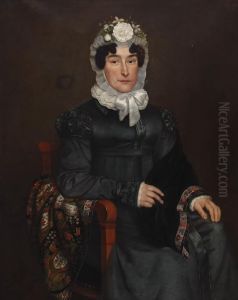Wilhelm Adrian Netscher Paintings
Wilhelm Adrian Netscher, a Dutch artist, was born in 1882 in the Netherlands. His biography, however, is not widely documented in the annals of art history, and as such, information on his life and works is relatively obscure and may sometimes be confused with those of other artists, such as Caspar Netscher, who was a Dutch Golden Age painter. It is important to clarify that Wilhelm Adrian Netscher and Caspar Netscher are distinct individuals separated by centuries.
Wilhelm Adrian Netscher's artistic endeavors took place in the late 19th and early 20th centuries, a period that saw significant changes in the art world with movements like Impressionism, Post-Impressionism, and the advent of Modernism. However, specific details about Netscher's contributions, stylistic developments, and the scope of his influence are not well-documented in mainstream art historical discourse.
Despite the lack of extensive records, it can be presumed that Netscher was active during a time of great artistic experimentation and innovation. As with many artists of that era, he may have grappled with the tensions between traditional academic art and the emerging avant-garde movements. Unfortunately, due to the limited information available, the specifics of his artistic style, the subjects he favored, and the exhibitions he participated in remain unclear.
Wilhelm Adrian Netscher passed away in 1943, amidst the turmoil of World War II, which may have further contributed to the obscurity of his artistic legacy. The war had devastating effects on the cultural heritage of Europe, with many artworks destroyed or lost, and numerous artists' careers interrupted or ended.
Overall, Wilhelm Adrian Netscher's life and work are a reminder of the countless artists whose contributions have not been fully recognized or remembered in the historical narrative. They represent the vast, unseen tapestry of creativity that exists beyond the well-charted territories of the most famous artists and movements.
